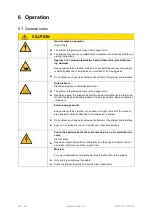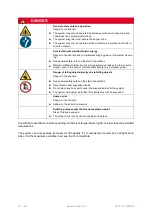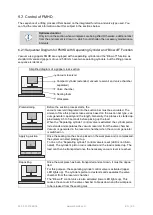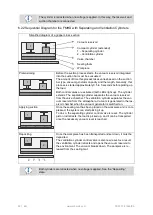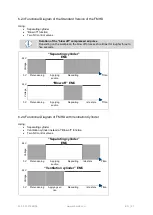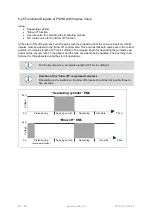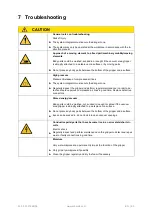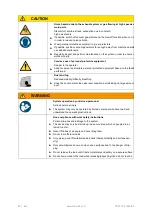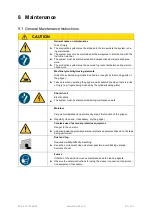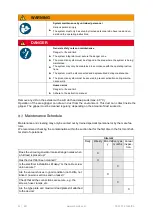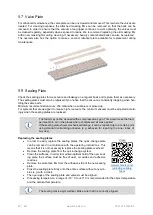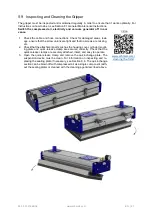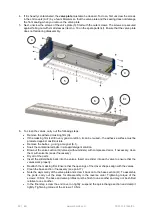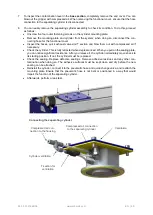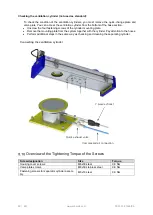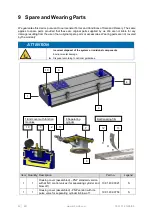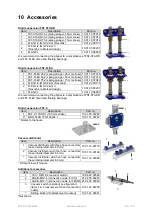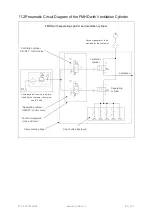
46 | EN
www.schmalz.com
30.30.01.01648/06
Valve Plate
For enhanced maintenance, the valve plate can be unscrewed and removed. This is where the valves are
located. For cleaning purposes, the attached masking films can be removed so that the balls can be
removed. In order to ensure that the vacuum area gripper continues to work optimally, the valves must
be cleaned regularly, especially when exposed to resins. We recommend replacing the old masking film
with a new masking film during cleaning. If necessary, heavily contaminated balls can also be replaced.
The operator also has the option to make a second, identical plate available for replacement during
maintenance.
Sealing Plate
Check the sealing plates for wear, tears and leakage on a regular basis and replace them as necessary.
The sealing plates must also be replaced if you notice that the vacuum is constantly dropping when han-
dling the same parts.
Minimum recommended vacuum: 250 mbar when a workpiece is picked up.
For systems that are designed to require higher vacuum, the minimum vacuum must be adjusted accord-
ingly when the sealing plates are replaced.
The foam may not be cleaned with a compressed-air gun. This would make the foam
permeable to air in the places where compressed air was applied.
If the sealing plate shows mechanical damage, it can be repaired up to a certain point
using standard vulcanizing adhesive (e.g. adhesive for repairing the inner tubes of
bicycles).
Replacing the sealing plates
In order to easily replace the sealing plates, the quick-change plate
can be removed in accordance with the operating instructions. This
means that it is not necessary to replace the sealing plate overhead.
Remove the sealing plate from the quick-change system.
Clean the surfaces. In order to maintain optimal hold of the new seal-
ing plate, the surface must be free of dust, oil, oxides and adhesive
residues.
Remove the protective film from the adhesive strip of the new sealing
plate.
Press the sealing plate firmly onto the entire surface without any wrin-
kles (e.g. with a roller).
The openings of the sealing plate and valves must be aligned.
Processing temperature: a range of +10° C to +40° C is recommended for the object temperature
and the ambient temperature.
The sealing mat is asymmetrical. Make sure that it is correctly aligned.
Video

